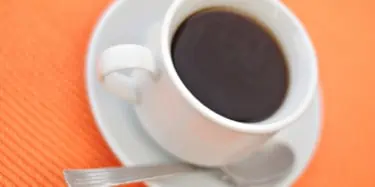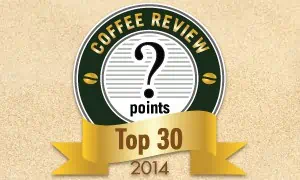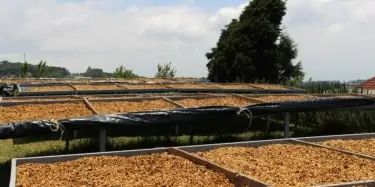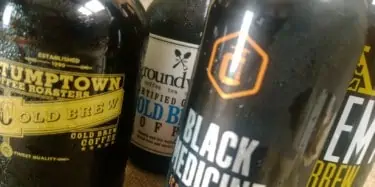Both from the practical goal of generating gift ideas for coffee aficionados and from the wonkier goal of understanding current trends in high-end coffee, this month’s sampling of thirty-five holiday coffees appears productive. The only criterion we imposed on the coffees we reviewed was availability: We asked that they be on sale throughout the holidays. But the larger expectation was, of course,
Tasting Reports – Most Recent
Coffee Review has published more than 250 monthly coffee tasting reports since February 1997. The most recent tasting reports appear below in reverse chronological order. You may narrow your search by category from the main navigation drop-downs or by using the key word search feature that appears in the page header. The content in tasting reports and associated reviews was correct at the time of publication but may not remain accurate over time.
Fair Trade Certified Coffees
Consumers who prefer to buy coffees that promise to reconcile pleasure with generosity toward the people and environment responsible for that pleasure, and who want to feel some solid confirmation regarding the generosity part, should find useful recommendations among the ten coffees reviewed this month. Nine of the ten are Fair Trade Certified, meaning that, according to the certifier, Fair Trade
Traditional Coffees of Central America: Quest for the Classic
We’ve seen two conflicting, yet overlapping, trends at the growing end of specialty coffee over the past decade. On one hand, greater and greater homogeneity. Traditional coffee tree varieties, varieties that may not taste unique, but do taste subtly different, are being replaced by disease-resistant, higher-yielding varieties that incorporate robusta genes and, well, usually don’t taste different
Coffees of Kenya 2015: Still Great, Still Kenya
One thing that can be said about this month’s survey of 32 Kenya coffees from 26 specialty roasters is that the good samples — and there were many — were not just exceptional, but exceptional in a thoroughly Kenyan way. In fact, the 23 Kenya samples that rated 90 or better often provoked rather repetitive key descriptors: deep, pungent, sweetly tart; black currant, dark chocolate, various citrus
Decafs 2015: The Splendid, The Strange, The Listless
Some observations about decaffeinated coffees prompted by this month’s modest sampling of decafs from twelve American specialty roasters. Observation one: Most decaffeinated coffees continue to be bad, in some cases close to foul. Not only are the sensory profiles flattened and simplified by the brutality of the decaffeination process, but this process often adds mysterious flavor notes to the
Blends 2015: Quietly Agreeable with Some Fireworks
Blends (particularly those designed for regular brewed coffee) have been out of fashion at the top end of in American specialty coffee for some time now – say for the last ten to fifteen years. The excitement has been focused on “single-origin” coffees, meaning coffees from a single growing region (the broadest definition), or (a more rigorous definition) from a single farm or co-op, or (most
New Starbucks Reserve Coffees
For the past ten years or so smaller, hipper, more nimble roasting companies have dominated the coffee conversation in America, outflanking Starbucks in roast style (lighter than Starbucks), freshness (roast-dated packaging), coffee selection (precisely identified seasonal small lots), brewing (by the cup, often by hand), and even design sensibility (usually blunt, simple and utilitarian, often
Open Source Espresso Blends
With this espresso tasting we focus on what appears to be a new trend in espresso blending – the open disclosure to customer and competitor of the identity of the specific green coffees that compose a blend, as opposed to the deliberate secrecy around blending that has prevailed in the coffee industry for decades. The old approach to blending implied secret mastery of arcane coffee knowledge that
Elegant Earth: Wet-Hulled Sumatras and One Sulawesi
Wet-hulling is not an obscure Olympics sailing event nor (at least to my knowledge) a special trick in waterskiing or wakeboarding. It is a fruit removal and drying variation that contributes much of the distinct character of traditional Indonesia coffees, particularly those from Sumatra and Sulawesi. It is also practiced on other Indonesian islands, almost everywhere in Indonesia where small
The Everyday Exceptional: Macro-Lots 2015
Coffees that attract a high rating on Coffee Review are often produced from very small, or “micro” lots of green coffee, specially selected for quality and distinctiveness, precisely described in regard to botanical variety and other details, and not likely to be available for more than a couple of months before they’re sold out. And usually (though not always) they cost considerably more than
K-Cups and Other Cups: Capsule Single-Serve Coffees
When Coffee Review last visited the single-serve filter-coffee capsule scene in 2013, smaller, high-end roasting companies were eyeing the soaring popularity of Keurig K-Cups with some apprehension and, in a few cases, with interest: Hey, maybe I can get in on the action once the patents start lapsing. However, based on what we encountered during this month’s tasting, it seems that most higher-end
Top 30 Coffees of 2014
We are pleased to present our Top 30 Coffees of 2014, Coffee Review’s second annual ranking of the most noteworthy coffees we reviewed over the past year. We selected and ranked these exceptional coffees and espressos based on quality (represented by overall rating), value (reflected by most affordable price per pound), and consideration of other factors that include distinctiveness of style,
Holiday Gift Coffees: Blends and Beyond
This holiday season may mark the definitive return of the blend to the high-end specialty coffee scene after years of almost exclusive dedication to ever-more-refined single-origin offerings. The excitement and ingenuity of many of the holiday-themed blends we sampled this past month certainly suggest such a revival. The holiday blend, a long-standing staple of the specialty coffee business in the
Geshas and the Rest: Single-Variety, Single-Lot Coffees
The variety play – marketing coffee by the botanical variety of the tree that produced the coffee – is one of the latest trends in the high-end specialty world. True, some roasters who submitted samples for this month’s article still confused tree variety (botany) with origin (geography), and sent us coffees from a single growing region (Sumatra, say) rather than coffees that reasonably can be
Roast, Variety, Sustainability: HarVee Awards Coffees 2014
Some of the more interesting trends and issues that surfaced among the thirteen prize-winning coffees reviewed this month from the recent Let’s Talk Coffee/Sustainable Harvest HarVee award competition in Panama range from how (the coffees were roasted), to what (tree varieties produced the coffee) to who (produced the coffee). As far as roast goes, we cupped coffees roasted from the far honeyish
Honey and Natural Process Coffees, Central America 2014
Nine years ago I organized a panel for the Specialty Coffee Association of America called “Using Alternative Processing Methods to Create Product Differentiation: Perspectives and Opportunities.” Presented in Spanish and English, it attracted around five hundred coffee producers and roasters. The overall premise of the panel was simple: coffee is no longer a commodity beverage but a specialty
Hawaii 2014: The Classics Rule
When writing about Hawaii coffees – more specifically, Kona coffees – I invariably feel conflicting impulses about whom to take on. Should I attack the many cynical Kona-bashers among the mainland high-end coffee-roasting community who sneer that Hawaii coffees (Kona in particular) are at best ordinary and always overpriced? On the other hand, should I rattle the bars of the sun-and-sand besotted
Bottled Iced Coffees
North American cafés for some years now have been brewing coffee in advance to refrigerate and serve over ice on warm summer days. The brewed, refrigerated coffee is usually prepared by the cold-brew method: ground coffee is steeped in cool or room temperature water for around ten to twenty-four hours, and after this prolonged extraction, filtered and stored in the refrigerator until it is served
Subtle Exoticism: Sulawesi and Papua New Guinea
This month’s reviews include coffees from two Indo-Pacific growing regions, the Indonesian island of Sulawesi (formerly Celebes) and Papua New Guinea. We had planned to include coffees from several other Indo-Pacific islands – Java, Bali, East Timor – but we were not able to source enough samples to justify including them. Never mind; we turned up some superb and original coffees from these two
Rwanda and Central Africa: Sweet and a Hint of Savory
Perhaps a more accurate geographical descriptor for the coffee origins we focus on this month may be African Great Lakes coffees rather than Central Africa coffees. The growing regions that produced almost all of the thirty coffees we cupped this month are clustered around or near the gigantic lakes that dominate the geography of the mountainous central-east region of Africa, at or near the






























